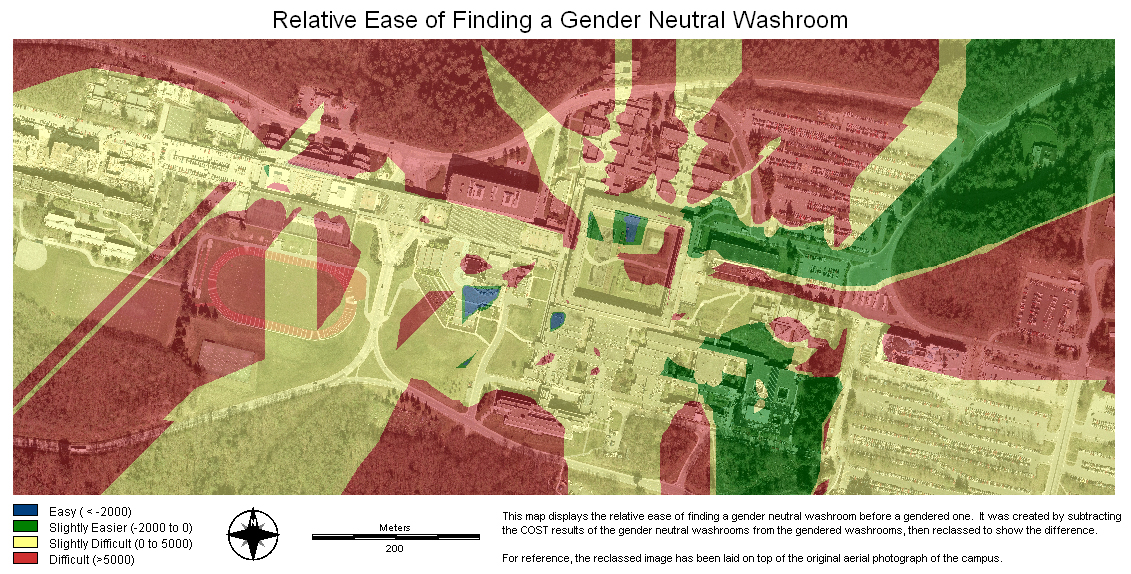Results
The intended outcome of this project was to show the difficulty in accessing gender neutral washrooms on campus. To do this, I created two final map output: one to show the disparity in the ease of access, and one to show areas of accessibility.

Relative ease of finding a gender neutral washroom, click to enlarge

Accessibility of gender neutral washrooms, click to enlarge
Recommendations
Initial data collection for this project produced a surprising result: there are far more gender neutral washrooms on campus than initially thought! However, many of these washrooms are explicitly intended for physically handicapped persons, which is not an ideal solution.
From just the data collection, it is obvious that there are some areas which are poorly equipped in terms of gender neutral washrooms. The Robert C. Brown Hall has an abundance of bathrooms (two on every one of its Escher-esque floors), but no gender neutral ones, each of the washrooms for physically handicapped persons are located inside gendered space. With four washrooms on each floor and only gendered handicapped stalls, the WAC Bennett library is in a similar situation; however some of these washrooms are single stall and could be renovated.
From this analysis, it is apparent in most areas on campus it is more difficult to find a gender neutral washroom. Furthermore, due to an early onset operational problem, it is actually far more forgiving than my own personal experience with finding a gender neutral washroom. Though it may be within a certain distance, it is absolutely unreasonable to expect someone with a biological urge to need to travel outside of their building to find a washroom they can use, when there are so many washrooms they cannot.
It is my recommendation that all single stall washrooms which are currently gendered be reclassified into general washrooms. In most cases, it would be as simple as changing the sign on the door to a generic washroom sign, and in others it would only involve simple renovations. In some buildings, more intensive measures must be taken to install gender neutral washrooms; in the RCB and Education buildings, there are no gender neutral facilities -- not even gender neutral handicapped washrooms. This is more than a gender equity issue, as parents or caretakers with opposite-gendered dependents require these facilities as well.
I hope that this project will provide some evidence for the case for more gender neutral washrooms on campus. For more information about any of these results, or to volunteer for this project, please contact Lindsay Dignall.Copyright © Lindsay Dignall, 2008